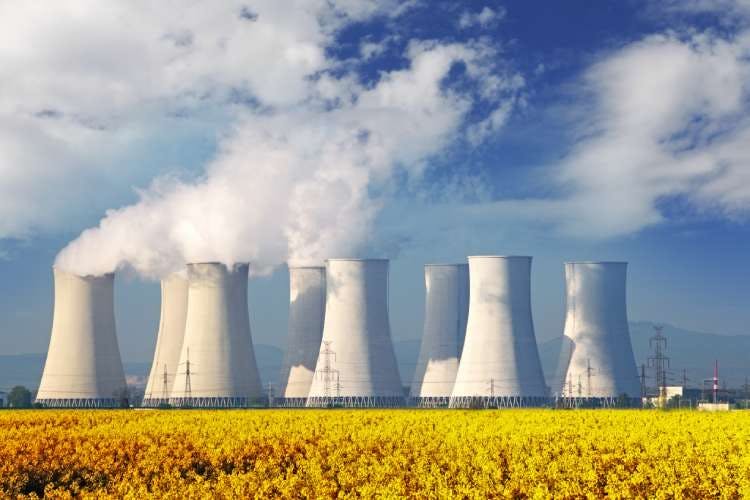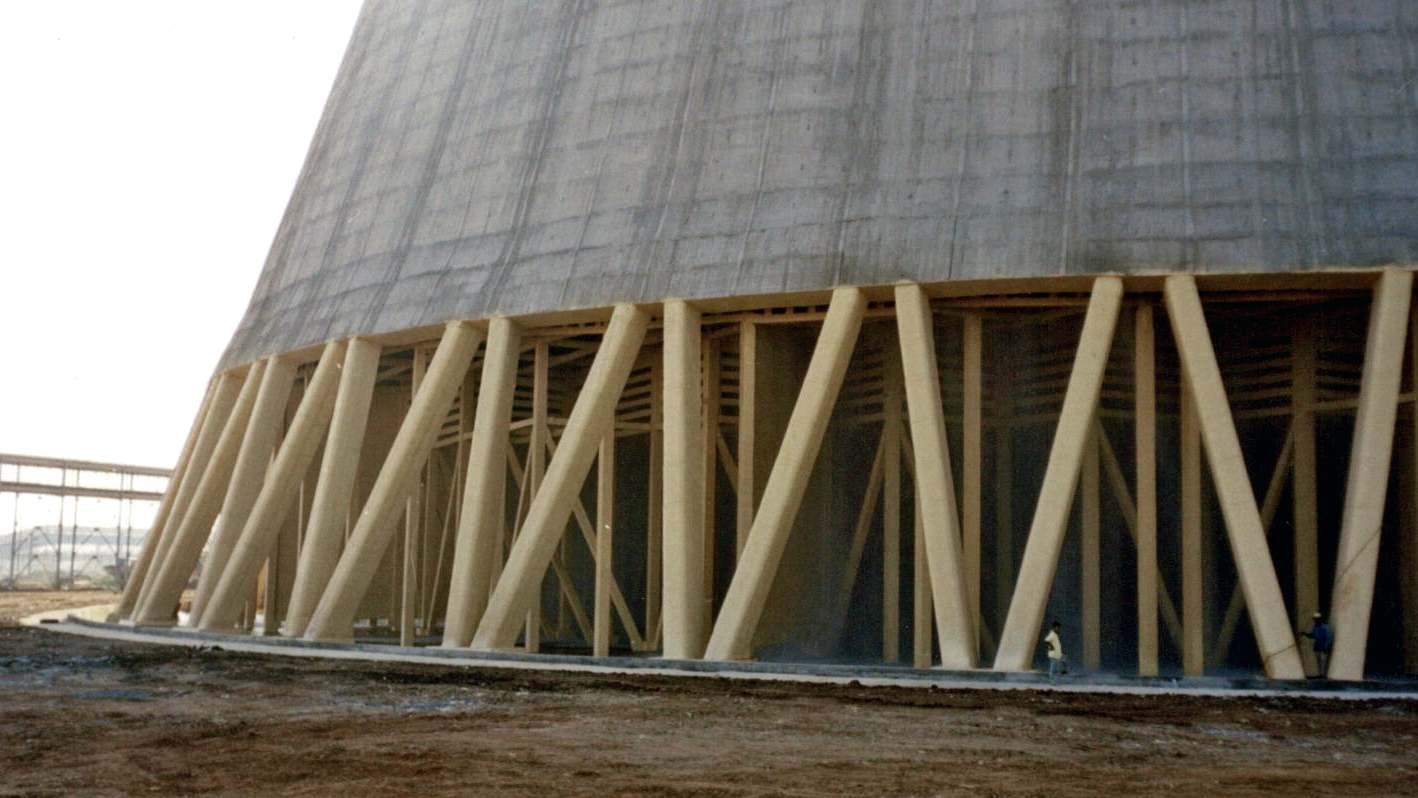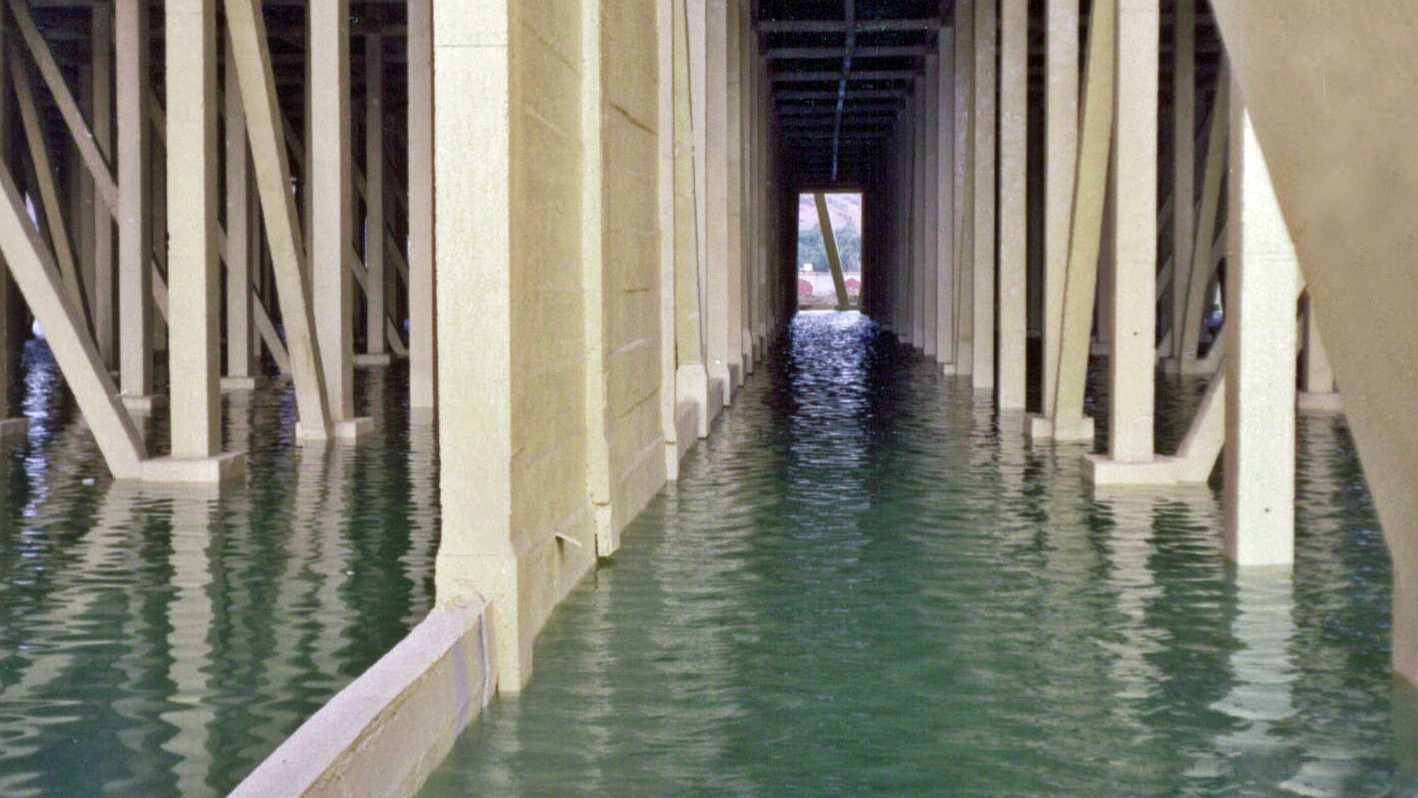

Power Generation
Cooling & Make Up Water Pipes



Protection against seawater & other corrosive water streams
Purethane coatings have excellent salt water corrosion resistance (they easily pass the >10,000 hour Salt Spray test) as well as outstanding impact and abrasion resistance making them the coating of choice of the power industry for lining Cooling Water (CW) and Make Up Water (MW) Pipelines. Robotic surface preparation and lining equipment allows high quality, and highly uniform application on-site, however smaller diameter pipes can also optionally be lined at the pipe manufacturer’s coating shop. Thermal power plants use around 2.2 – 3.7m diameter Cooling Water (CW) pipes and 0.8 – 1.4 m diameter Make Up Water (MW) Pipelines.
The raw cooling water is quite often saline & corrosive. Additionally, most coastal power plant use seawater for cooling which can be very corrosive. These are either “once through” or re-circulating systems. In order to provide lasting protection against corrosion, Purethane Coatings are recommended and used to line these pipes. The hydrophobic and inert nature of our coatings allow excellent saltwater resistance and the combination of hardness and flexibility is unique and found only in 100% Solids Polyurethane. This combination allows them to have excellent high impact and abrasion resistance which prevents handling damage and abrasion from solids particulates in water stream. Purethane coatings have very low permeability due to their hydrophobic nature and low permeation prevents transmission of corrosive ions & gases to the substrate.
Maintenance Free. No re-lining, no power plant shutdowns!
In an operating power plant, shutdowns are infrequent and of very short duration (few days at most). It is practically not possible to conduct a major re-lining exercise. Therefore the lining needs to be maintenance free and provide a service life matching the design life of the power plant. Expected service life of thick film Purethane Coatings is in excess of 40 years i.e. the design life of the power station making them virtually the only practical solution for lining of these pipes.In comparison, 100% Solids Liquid Epoxy and Glass Flake Polyester Coatings are very brittle with low elongation, impact and abrasion resistance making them highly prone to damage during installation as well as in service. These coatings also shrink during curing and ageing in the service lifetime which lays stress on the bonding surface leading to disbondment. Application of any lining to these large diameter pipes, especially onsite, requires considerable and uncommon technical skills and expertise. Amchem has developed proprietary equipment and application procedures which have been proven over the years for proper application of the coatings. Some instances of early coating failures have been witnessed in the Power sector which can be attributed directly to lack of proper technology, equipment and experience on part of the coating vendors. These have proven very costly for the operators as a single day of shut down in a 1,000 MW mega power plant due to lining disbondment can cost the operators upwards of $1 Million.
Concrete Cooling Towers (NDCT)
Protecting against Corrosive Ions
Concrete Natural Draught Cooling Towers (NDCT) and Induced Draught Cooling Towers (IDCT) represent a significant investment in Power Plants. The cooling water is often saline or corrosive. Most coastal power plant use Seawater for cooling which is highly corrosive. The corroding ions reach the reinforcing steel of the concrete where the high volume of corrosion products leads to cracking and spalling of the concrete in a vicious cycle. Purethane Coatings effectively stop permeation of the corrosion ions into the concrete surface. Reinforcing steel in concrete has a passive Iron Oxide film on the surface. However, Chloride ions from raw/hard water or seawater make the film permeable, the passivity is destroyed and corrosion can proceed. The rate of corrosion then depends upon the availability of moisture and Oxygen at the surface of the steel, both of which are abundantly available in a cooling tower.
Microcracks as a catalyst for corrosion
In high quality concrete the transport of gases and ions is a slow process. However it is much faster through an interconnected network of micro cracks and capillary voids by capillary action. Such a network of micro cracks already exists in reinforced concrete and the widening of cracks in service (by thermal and humidity changes) precede the corrosion process. As soon as the Chloride ions reach the rebar, one has the powerful anodic-cathodic potential, and with free moisture abundantly available corrosion will proceed. Permeability (not chemistry) of concrete is the most important factor for long term durability. To prevent the permeation of Chloride ions into the concrete an impermeable barrier in the form of a surface coating is required. The barrier must also be able to span existing and fresh micro cracks in the concrete.
Special Properties of Purethane
Our polyurethane coating – Purethane – provide an excellent barrier against the permeation of these ions. A few notable properties related to this use-case is listed below:
- Chloride Ion Transmission Rate – 1.8% of uncoated concrete
- Oxygen Diffusion – 0.0001 cm²/sec v.s 1,100 cm²/sec of uncoated concrete
- Zero Liquid Water Permeation
- Crack Spanning – Spans cracks upto 1.4mm which may open under the coating.
Disadvantages: Epoxy, Glass Flake & Vinyl Ester
Brittle coatings like Epoxy, Glass Flake Polyester, and Vinyl Ester are not suitable for concrete as they have absolutely no crack spanning capabilities. Additionally, they shrink with curing & ageing leading to stress on the bonding surface and disbondment. In particular, Epoxy and Glass Flake Coatings also have thickness limitations and cannot be applied more than 1.00mm which leaves many defects in the coating on rough concrete through which corroding ions can enter the concrete. Furthermore, application capability is critical in cooling towers as the fill support structure comprises of thousands of narrow columns and beams at heights up to 18 metres. Unlike other coatings, Purethane can be fast sprayed and thus results in quick coating of accessible area so the operator can shift to the next area frequently. However, this means that scaffoldings are not suitable rather high reach equipment like Scissor Lifts and Articulating Booms need to be deployed.
Other Applications in Power Plants
Purethane coatings find use in condenser water boxes including Muntz metal tube-sheets, sea water steel pile and steel jacket, travelling screens and housing. Purethane coatings provide enduring protection to riveted / welded penstocks, tunnels and concrete spillways in hydroelectric plants. Purethane linings are ideal for water de-mineralizing systems and boiler feed-water treatment and holding tanks. They also protect coal hoppers, chutes and ash slurry pipelines from abrasive wear and corrosion.Flue gas desulphurization (FGD) systems have severe corrosion in many areas which can be arrested by coating with Purethane. They have also been used successfully to line stainless steel nuclear waste disposal containers.


